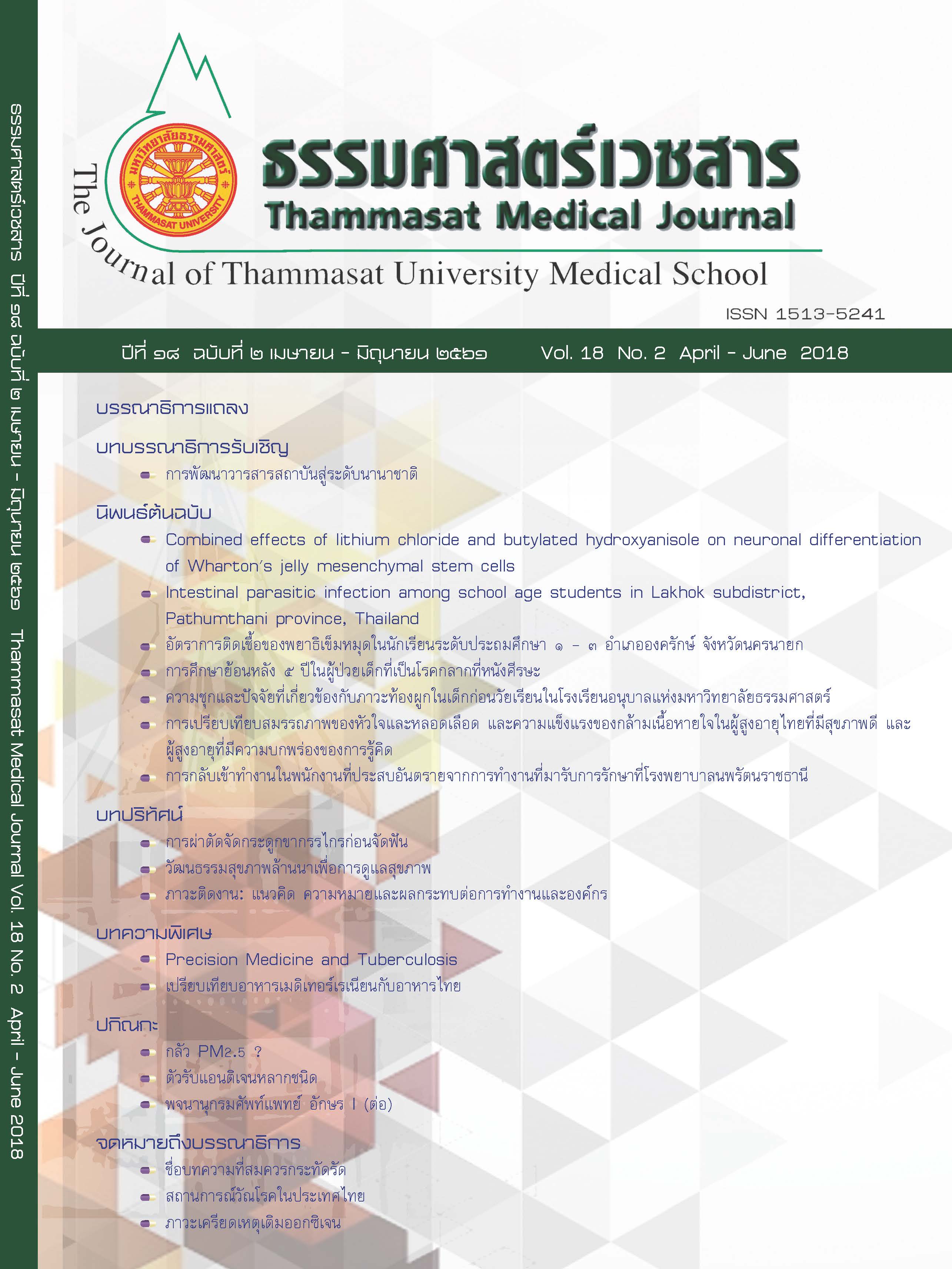Combined effects of lithium chloride and butylated hydroxyanisole on neuronal differentiation of Wharton’s jelly mesenchymal stem cells
Keywords:
Wharton’s Jelly-derived mesenchymal stem cells, Neuron, LiCl, Butylated hydroxyanisoleAbstract
Introduction: The potent neuron inducers which promote cell differentiation are necessary for the achievement of stem cell-base therapies. The chemical that widely used as neuron inducer is butylated hydroxyanisole (BHA). However, it’s induced transient neuron differentiation. The previous studies showed that Wnt signaling pathway played an important role for development of neuron. The objective of this study was to evaluate the potential of lithium chloride (LiCl), the potent Wnt signaling pathway activator and BHA on neuronal differentiation from Wharton’s Jelly-derived mesenchymal stem cells (WJMSCs).
Method: WJMSCs were cultured in media containing 1) 200 M BHA 2) 5 mM LiCl and 3) the combination of 200 M BHA and 5 mM LiCl. The 3 culture medium were used to induce neuronal differentiation in WJMSCs for 7 days. The morphological changes were assessed using hematoxylin staining. Cell differentiation was monitored by analysis of 3 neural gene expression, nestin, -tubulin III and neurogenin, using semi-quantitative reverse transcription-polymerase chain reaction (RT-PCR) technique.
Results: The two culture media, BHA or BHA combined with LiCl, induced the MSCs differentiate into neural-like cell phenotype. The RT-PCR results demonstrated the increased expression of all neural marker genes in BHA-treated cells. As well as, the expression of nestin and -tubulin III were increased in LiCl-treated cells or LiCl combined with BHA while neurogenin expression was decreased.
Discussion and conclusion: Our findings provide basic information for neuronal differentiation from MSCs by BHA or LiCl. However, the mechanism of neural differentiation control by the inducers should be explored in further study.



